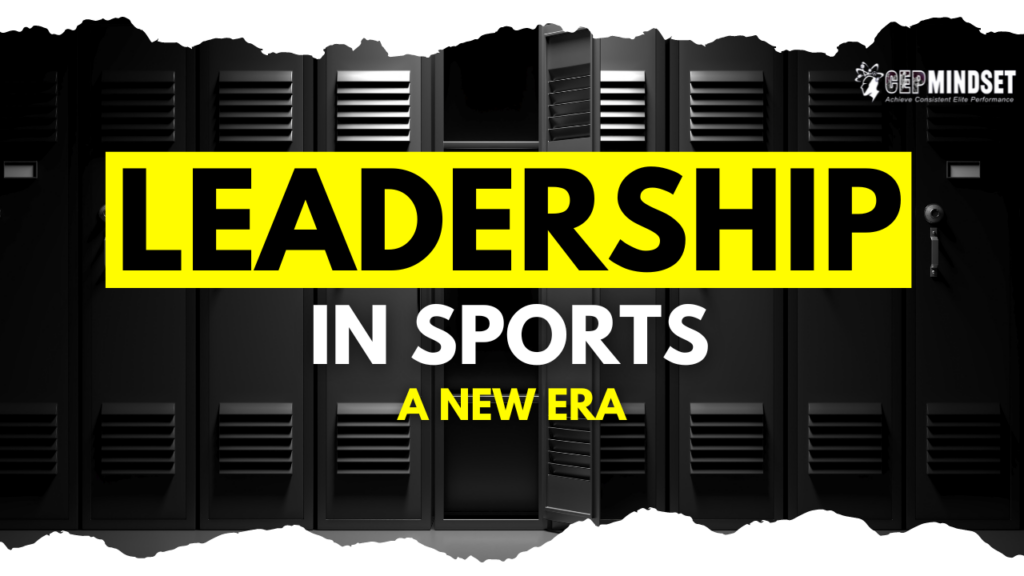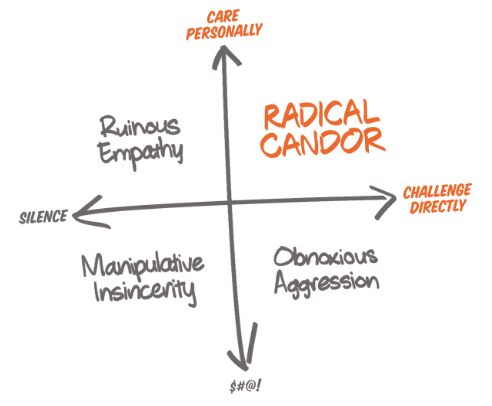
One of the greatest benefits of sport is that it can help people become better leaders.
Unfortunately, too many athletes are missing the boat.
There are multiple reasons at play, but a key one is the lack of leadership being demonstrated by the coaches.
This article breaks down the nuances of what it takes to be an effective leader in the new era of sport – whether you are an athlete, a coach or just want to show up as a better leader in any area of life.
Self-Leadership
Before leading others you must first learn to lead yourself.
This is what the mental game is all about – self-leadership.
It’s about taking responsibility for your own mindset, attitude, and behaviors.
There are two beneficial outcomes from mastering your mindset.
First, it directly affects those around you as you will be leading by example. Not just in your effort and focus, but in your composure, resilience, and confidence. How you respond to pressure and adversity can be contagious and positively affect those around you.
Second, when you are in a centered state you are primed to effectively lead others through empathy and encouragement. When you are not centered, you will struggle to listen with an open ear and communicate calmly and effectively.
Interacting with Others
Self-leadership is always step 1, but learning how to effectively interact with others is a set of skills in and of themselves.
There are 3 core communication skills that if you master, you will be a great leader.
But before we dive in, there is one important thing to address.
Why do you want to be a leader?
If the answer is for your own self-gain, rewards, or recognition – then the strategies below will not work as well.
There is only one good reason to be a leader – it is to serve the team. Doing this will often come back to personally benefit you – but that should not be the primary reason you want to be a better leader.
As a leader, serving the team should be your primary motive. From there, the following strategies will help you effectively impact the team.
Strategy #1: Praise
No matter how common sense this strategy seems, it is shockingly underutilized.
The culture of a team is highly dependent on what gets measured and praised.
This doesn’t mean you need to become a hype-person or be super positive all the time. Being fake doesn’t work, and being positive all the time is not sustainable.
Instead, it is about catching others doing things well and acknowledging the little things out loud in front of the whole team.
The benefit is not just in the person receiving the praise, but in the ripple effect on everyone around it.
Praise is the number one strategy to help your team build momentum.
Think of two teams where the start of the game is back and forth – evenly matched.
Team A sits there quietly with small amounts of praise and some corrections when mistakes are made.
While team B is giving lots of praise and recognition. They anticipate and feel like success is coming their way. They believe they are gaining momentum.
The intangible momentum is surely in Team B’s favour.
On the individual level, praise is also tied to confidence. Although an athlete’s confidence should not be tied to receiving praise, the external validation will certainly play a factor for a lot of athletes. Click here for a full write up and video on How to Play with Confidence.
Strategy #2: Encourage
The fundamental way to get more out of those around you is to effectively encourage and inspire them.
Your actions and words can help others own their greatness, show up at their best, and keep moving forward towards their goals.
But the mistake most leaders make is to either give too little support or too little challenge.
Encouragement is about having the right mix of support and challenge based on the needs of the situation.
Too little support and those you are trying to encourage will feel you don’t understand them and they will think you don’t truly care. As such they start to tune you out or push back to your suggestions.
Too little challenge and those you are trying to lead will lack structure and growth that comes from challenge. This can turn into chaos or complacencies within a team.
The human skills of leadership are primarily about reading what a situation needs. Then, it’s about being able to deliver the delicate balance of support and challenge.
Most situations are a mix of both support and challenge – which can be tricky – so first let’s break down the key behaviors of each side.
Supportive-Based Leadership Skills & Behaviours
- Empathy: This is the foundation of being a supportive leader. It is simply about your ability to put yourself in their shoes. This is not about sympathy – which is about having a pity party. Instead, empathy helps you better understand what they are thinking and feeling, so you can better connect and encourage them.
- Collaborate & Listen: Ask for other peoples input then listen. Relay back what you heard to show you understand, then when appropriate make adjustments based on their input – this truly shows that you care.
- Acknowledge Thoughts and Feelings: This can be when they directly mention their thoughts & feelings, but it could also be you making an educated guess. For example, after a mistake or failure you can say I assume you are probably feeling pretty frustrated. This shows your thoughtfulness – you are both thinking of how they might be feeling and care about how they are feeling.
- Positive Affirmations: One of the greatest gifts a leader can give is to help others see what they are capable of. By affirming your belief in others, you can help ignite their belief in themself. This is a form of praise (strategy #1), but it doesn’t have to be after they did something well. In fact, reaffirming what they are capable of is an important strategy after failure. It provides hope of turning things around and bouncing back.
- Take Responsibility: When you take responsibility for your faults, mistakes, or short-comings it helps create a safe environment. Others become less worried about failure and the need to be perfect. This is not about decreasing standards, but rather about showing our humanity – being relatable, and leading by example.
- Make it Fun: Don’t forget to keep things fun. If things get too heavy and too serious all the time it will smother the life out of people. All high-performing environments need to be able to keep things light – obviously without losing the details and work ethic. This can be attained by telling a joke, playing a fun game, or simply reminding people not to take things too seriously.
Challenge-Based Leadership Skills & Behaviors
- Honesty: The foundation of effective challenge is rooted in honest and caring feedback. The book Radical Candor by Kim Scott effectively highlights this as you can see in her 4 quadrants below. This is also why we explained the supportive behaviors first. They generally need to be paired together to optimize effectiveness.

- Raise Standards: One of the most powerful ways to help others grow is to help them raise their standards. Greatness is not achieved by having realistic expectations. Instead, help others grow by challenging them to set ambitious goals and believe in a greater version of themselves. Help unshackle others from their own limitations and constraints.
- Objective Feedback: The primary way to challenge someone to grow is to give them feedback. If someone is not open to your feedback in the first place, there is no point in giving it. In fact doing so, will only make things worse. A simple first step is to ask if the person or team is okay with receiving your feedback. In addition to empathy and honesty, be objective when giving feedback. This means to make the feedback more about a tangible fact versus an opinion. Taking out the judgment makes people more receptive to the feedback and optimize the learning process.
- Provide Opportunities to Take Initiative: Challenging others to step up is a great way to help develop other leaders. Sometimes people just need an opportunity and a little nudge. A common mistake is taking on too many responsibilities and being the primary decision maker as the leader. So, help empower others to step up by providing them the opportunities and encouraging them to take initiative.
- Take Charge & Make Decisions: Depending on your role, you will likely need to take charge and make decisions. Although it is beneficial to collaborate and work with others when making plans, sometimes the situation requires someone to just step up and take charge. When taking charge this way, it is best to say why you are making the decision – this shows that you care about others understanding the decision you are making. This is the difference between being a tyrant and a leader.
- Address Problems: Problems will always arise within a team dynamic. Unfortunately, in many teams these problems get swept under the rug or turn into closed door politics. This is what Patrick Lencioni calls “fake harmony”. Instead, great teams have healthy conflict. When problems arise, you should call out the elephant in the room and work to resolve the issue. You want to remind others that you are all on the same team and the goal is to resolve the problem together.
Those are a lot of behaviors – so the recommendation is not about memorizing. Instead, you can self assess which ones you’re effectively utilizing and which ones you want to improve on.
The simplest way to look at encouragement is finding the right amount of support and challenge for the situation – and usually a good mix of both works the best.
Furthermore, this can be utilized in both 1-on-1 and team settings. The impact of effective encouragement in 1-on-1 settings should not be underestimated. This can be a great place to focus if the team setting seems a bit daunting.
A common mistake coaches make in the 1-on-1 setting is to give too much challenge and not enough support – if they give 1-on-1 feedback at all.
Whereas, athletes are often scared to step on each other’s toes, so they give too much support and not enough challenge.
So be mindful, self-reflect, and keep refining your approach.
Strategy #3: Accountability
This is what most people think leadership is all about. But I contend that praise and encouragement is more important than accountability.
Nonetheless, accountability is a crucial component to a championship culture. Unfortunately, most coaches do a terrible job at effectively holding athletes accountable. They apply the ‘old-school’ approaches of yelling and being demeaning in order to get players to perform better.
This is a fear-based approach intended to help teams achieve short-term results. The approach still lingers in our sport culture because coaches have been ‘conditioned’ to think this is effective coaching and the way to hold others accountable. It is what their coaches did to them and at times it can lead to short-term results.
However, it has never been a truly effective approach for success and many coaches have taken this approach too far. The countless reports of physical and emotional abuse are beyond concerning. I dive heavily into my concerns here: Is Hockey Broken? And The Leaders of Sport are Failing.
What might be worse is that this mentality has been adopted by athletes because coaches have continued to go with the status quo and normalize this approach as the best way to hold others accountable. So when athletes are encouraged to be better leaders and hold others accountable, they think they have to yell and be demeaning.
This could not be further from the truth.
Today’s athletes are much more aware that this is not the right way. They rightfully resist and don’t respond well to this type of coaching.
But when asked to be leaders and hold others accountable – they don’t know what else to do. It has not been modeled to them or explained effectively.
So athletes will either not do anything – which explains why so many coaches complain they have a lack of leaders on their team. Or they resort to the ‘old-school’ approach of yelling and being demeaning.
The good news is, there is another way – here are the 5 keys to effective accountability:
- Clear Expectations: This means there are clear outcomes, success criteria, and a process to achieve the expectations. This is best identified as a group – so collaborate, poll ideas and come to an agreement. Then make sure the team can summarize the expectations.
- Clear Capability: Does the person or the team have the skills needed to meet the expectations? If not, then you are setting them up to fail. Identify what skills, resources, and or drills they should utilize to optimize their capability and the odds of meeting the expectations.
- Clear Measure: Talk is cheap – so make sure there is a clear measure of the expectations. No one can hide from a tangible measure. Depending on the expectation, you should decide on the frequency in which the measure will be reviewed.
- Clear Feedback: If you have clear expectations, capability, and measurement, the feedback can be fact-based and easy to deliver. Include others in the feedback process – they might help determine the measurement and or ensure they have the opportunity to ask questions.
- Clear Consequences: Make sure to give rewards and recognition for success, then set new expectations. If someone is struggling to meet the expectations, first go back and make sure the first 4 are made clear. Negative consequences should be a last resort. The best way to do this is to make them an agreement in advance – accountability is strongest when it is self-prescribed. When others have agreed to the expectations, the measure, and the consequences, they can hold themselves accountable to meeting the expectations.
I hope you found this helpful.
Please share this with anyone you think would be interested.

 Nicholas is a Senior High-Performance Coach and holds a doctorate in Sport & Exercise Psychology. From his specialized psychology research program, to his PhD studies, Nicholas has gained a tremendous foundation of knowledge and appreciation for the human experience. His passion for psychology has accumulated to a commitment to studying and applying performance psychology and stoicism. This commitment has led Nicholas to conduct many research studies focusing on understanding why and how some people thrive and prosper while others do not. His admiration for evidence-based solutions has propelled Nicholas to produce studies revolving around mindfulness, grit (perseverance and passion), performance, quality participation, social relationships, and well-being.
Nicholas is a Senior High-Performance Coach and holds a doctorate in Sport & Exercise Psychology. From his specialized psychology research program, to his PhD studies, Nicholas has gained a tremendous foundation of knowledge and appreciation for the human experience. His passion for psychology has accumulated to a commitment to studying and applying performance psychology and stoicism. This commitment has led Nicholas to conduct many research studies focusing on understanding why and how some people thrive and prosper while others do not. His admiration for evidence-based solutions has propelled Nicholas to produce studies revolving around mindfulness, grit (perseverance and passion), performance, quality participation, social relationships, and well-being. A Native of Quebec, Sara was part of the St. Lawrence University Women’s Ice Hockey team that competed in the NCAA Division 1 hockey league ECAC. During this time, Sara helped her team appear in four ECAC Hockey Tournaments and two NCAA Frozen Fours, and was a four-time member of the ECAC Hockey All-Academic Squad. Following her career at St. Lawrence University, Sara played one year of professional hockey with Lugano, where she truly honed her skills in understanding the intricate connection between mindset and performance.
A Native of Quebec, Sara was part of the St. Lawrence University Women’s Ice Hockey team that competed in the NCAA Division 1 hockey league ECAC. During this time, Sara helped her team appear in four ECAC Hockey Tournaments and two NCAA Frozen Fours, and was a four-time member of the ECAC Hockey All-Academic Squad. Following her career at St. Lawrence University, Sara played one year of professional hockey with Lugano, where she truly honed her skills in understanding the intricate connection between mindset and performance.
 Blair has over 13 years of experience as a Professional Dancer, Assistant Dance Captain & Cast Manager, as well as an additional 17 years of training. Over the last 3 decades, she has lived and experienced first hand the highest of highs & lowest of lows that come with pursuing a career in the Performing Arts.
Blair has over 13 years of experience as a Professional Dancer, Assistant Dance Captain & Cast Manager, as well as an additional 17 years of training. Over the last 3 decades, she has lived and experienced first hand the highest of highs & lowest of lows that come with pursuing a career in the Performing Arts.

 Natasha Habert draws from her training in sport and performance psychology, personal experiences as a competitive athlete, and deep passion for consistent high performance. She is a lifelong athlete and high performer, excelling in volleyball as both a player and coach.
Natasha Habert draws from her training in sport and performance psychology, personal experiences as a competitive athlete, and deep passion for consistent high performance. She is a lifelong athlete and high performer, excelling in volleyball as both a player and coach. Luciano’s hockey career is highlighted by his time playing college at the University of Victoria and two professional seasons in Europe. Throughout his career, he struggled with performance anxiety, a lack of consistency, fluctuations in confidence, and being caught in the results trap. This eventually led him to deviate from the main reason why anyone should play sports – for the enjoyment of the game. As a former athlete, Luciano has a unique understanding of the psychological pressures and struggles that athletes experience.
Luciano’s hockey career is highlighted by his time playing college at the University of Victoria and two professional seasons in Europe. Throughout his career, he struggled with performance anxiety, a lack of consistency, fluctuations in confidence, and being caught in the results trap. This eventually led him to deviate from the main reason why anyone should play sports – for the enjoyment of the game. As a former athlete, Luciano has a unique understanding of the psychological pressures and struggles that athletes experience. Alexis Woloschuk is a name synonymous with mental fortitude in the world of professional hockey. Throughout her career originating playing boys hockey, going to an academy away from home, playing her four years at Boston University and 7+ years in pro hockey she’s learned the importance of resilience, confidence, and dismissing both fear and other’s opinions. With a blend of relatability, confidence, and an acute understanding of playing to one’s potential, Alexis helps athletes reshape the way they perceive and harness the power of their minds.
Alexis Woloschuk is a name synonymous with mental fortitude in the world of professional hockey. Throughout her career originating playing boys hockey, going to an academy away from home, playing her four years at Boston University and 7+ years in pro hockey she’s learned the importance of resilience, confidence, and dismissing both fear and other’s opinions. With a blend of relatability, confidence, and an acute understanding of playing to one’s potential, Alexis helps athletes reshape the way they perceive and harness the power of their minds. Sean Mahoney is a member of the Association for Applied Sport Psychology (AASP), and a Master’s candidate in the Sport and Performance Psychology program at the University of Denver. For as long as he can remember, Sean has been fascinated by human performance and how to gain an edge over the competition. For most of his athletic career, he focused on the physical aspect of performance but neglected the mental. Because of this, he struggled with performance anxiety, focus issues, and limiting beliefs pertaining to confidence and self-doubt. His lack of focus on optimizing his mental game prevented him from reaching his full potential.
Sean Mahoney is a member of the Association for Applied Sport Psychology (AASP), and a Master’s candidate in the Sport and Performance Psychology program at the University of Denver. For as long as he can remember, Sean has been fascinated by human performance and how to gain an edge over the competition. For most of his athletic career, he focused on the physical aspect of performance but neglected the mental. Because of this, he struggled with performance anxiety, focus issues, and limiting beliefs pertaining to confidence and self-doubt. His lack of focus on optimizing his mental game prevented him from reaching his full potential. Savannah Fitzgerald is earning her M.A. in Kinesiology, Sport Psychology Option at California State University, Fresno. Possessing an internal motor that fires her rage for success, Savannah forged this attribute over five years while competing as an NCAA D-I water polo player and swimmer. Combined with her opportunity to represent and compete for the United States, she feels that sport has significantly impacted her professional development. Due to her personal experience playing at all levels, Savannah’s passion for mental performance began when she struggled to overcome pre-competition nerves and post-competition processing. When she discovered a world out there that people were referring to as ‘sport psychology,’ she felt like a piece of her brain was unlocked. Reality shifted as she stumbled into a space consisting of the most beautiful blend of elite performance, mental well-being, and athletics.
Savannah Fitzgerald is earning her M.A. in Kinesiology, Sport Psychology Option at California State University, Fresno. Possessing an internal motor that fires her rage for success, Savannah forged this attribute over five years while competing as an NCAA D-I water polo player and swimmer. Combined with her opportunity to represent and compete for the United States, she feels that sport has significantly impacted her professional development. Due to her personal experience playing at all levels, Savannah’s passion for mental performance began when she struggled to overcome pre-competition nerves and post-competition processing. When she discovered a world out there that people were referring to as ‘sport psychology,’ she felt like a piece of her brain was unlocked. Reality shifted as she stumbled into a space consisting of the most beautiful blend of elite performance, mental well-being, and athletics. Gabe is currently completing his Master’s in Counselling Psychology at the University of Victoria. Although Gabe played several years of high-level baseball, including a stint in the British Columbia Premier Baseball League (BCPBL), he chose hockey as his sport to pursue at the highest level possible. Gabe went on to play four years of junior hockey with the Richmond Sockeyes in the Pacific Junior Hockey League (PJHL) while also coaching minor hockey. Prior to junior hockey, Gabe played 3 years in the Canadian Sport School Hockey League (CSSHL) where he experienced the pressures and expectations of moving on to the next level. During those three years, Gabe constantly compared himself to others and struggled with coping when things did not go his way. Over time, he learned how to focus on his own process and path to the next level, while also developing strategies to improve well-being.
Gabe is currently completing his Master’s in Counselling Psychology at the University of Victoria. Although Gabe played several years of high-level baseball, including a stint in the British Columbia Premier Baseball League (BCPBL), he chose hockey as his sport to pursue at the highest level possible. Gabe went on to play four years of junior hockey with the Richmond Sockeyes in the Pacific Junior Hockey League (PJHL) while also coaching minor hockey. Prior to junior hockey, Gabe played 3 years in the Canadian Sport School Hockey League (CSSHL) where he experienced the pressures and expectations of moving on to the next level. During those three years, Gabe constantly compared himself to others and struggled with coping when things did not go his way. Over time, he learned how to focus on his own process and path to the next level, while also developing strategies to improve well-being. Louie is a mental performance coach from Toronto, Canada with a professional hockey career spanning over 14 years. Being a standout player at the University of Michigan, Louie was a Hobey Baker finalist and a 1st team All-American, which led him to getting drafted by the Ottawa Senators and playing in renowned leagues across the globe, including the DEL, SHL, and AHL.
Louie is a mental performance coach from Toronto, Canada with a professional hockey career spanning over 14 years. Being a standout player at the University of Michigan, Louie was a Hobey Baker finalist and a 1st team All-American, which led him to getting drafted by the Ottawa Senators and playing in renowned leagues across the globe, including the DEL, SHL, and AHL.
 Mia Landry is a former varsity hockey player at Brock University, where she competed at the USPORT level and was part of the 2021-22 OUA gold medal team. Mia currently represents Canada on the Women’s National Ball Hockey team and is pursuing a Master of Kinesiology Sport Psychology at her alma mater. Her research focuses on areas such as team cohesion, group dynamics, leadership styles, and sports culture.
Mia Landry is a former varsity hockey player at Brock University, where she competed at the USPORT level and was part of the 2021-22 OUA gold medal team. Mia currently represents Canada on the Women’s National Ball Hockey team and is pursuing a Master of Kinesiology Sport Psychology at her alma mater. Her research focuses on areas such as team cohesion, group dynamics, leadership styles, and sports culture. As a former member of McMaster University’s women’s soccer team, Emilie intimately understands the demands and challenges athletes face on and off the field. Although she encountered many challenges as a high-level athlete, particularly struggling with self-doubt and overthinking, Emilie was able to make a remarkable transformation when she began to embrace the principles of sports psychology.
As a former member of McMaster University’s women’s soccer team, Emilie intimately understands the demands and challenges athletes face on and off the field. Although she encountered many challenges as a high-level athlete, particularly struggling with self-doubt and overthinking, Emilie was able to make a remarkable transformation when she began to embrace the principles of sports psychology. Max is currently attending William James College, where he is earning a Doctorate Degree in Clinical Psychology and a Masters Degree in Professional Psychology. During his time as an undergraduate student, Max was inducted into the International Honor Society in Psychology (Psi Chi), and played on the Quinnipiac University men’s club ice hockey team.
Max is currently attending William James College, where he is earning a Doctorate Degree in Clinical Psychology and a Masters Degree in Professional Psychology. During his time as an undergraduate student, Max was inducted into the International Honor Society in Psychology (Psi Chi), and played on the Quinnipiac University men’s club ice hockey team.







